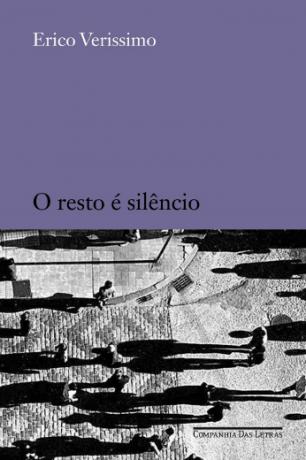When we think about the narrative, we usually associate the name to the textual types involved in the elaboration of an essay. At school, this is the first type of text to which we are exposed, whether through fairy tales or through classic fables. Telling a story, respecting the chronological succession of events, is usually very easy and, therefore, has become the most used and widespread technique.
O narrative text is commonly divided into three parts: introduction, development, and conclusion, exploring elements such as time, place, characters, and various circumstances that lead to the story's climax. This classical structure does not usually change, however, there are narrative structure techniques that can subvert the order in which these elements are arranged. Linear narratives, those that present a chronologically ordered plot, are the most common and also the ones that require the least commitment from the reader. The facts, narrated successively, without intrusion of digressions and
flashbacks, are more easily assimilated and prevent the less daring reader from losing the so-called “thread of the skein”.In Brazilian Literature we find several examples of writers who dared to subvert linear narratives, presenting readers with new ways of telling a story. In these stories, new techniques of narrative structure were explored, proving that it is not always necessary to respect the chronology of facts. See some examples of narrative structure techniques in classics from our Literature:
The non-linear narrative

In The Posthumous Memoirs of Bras Cubas, Machado de Assis adopted the non-linear narrative
The Posthumous Memoirs of Bras Cubas, in Machado de Assis: Machado de Assis' classic proves that it is possible to transgress the structure of the narrative without any kind of prejudice. Its narrator character, Brás Cubas, tells of his life after his death, being, as our greatest genius in Brazilian Literature well defined, a “deceased author”.
CHAPTER ONE / DEATH OF THE AUTHOR
“For some time I hesitated whether to open these memories at the beginning or at the end, that is, whether to put my birth or my death first. Assuming the common usage is to start at birth, two considerations led me to adopt a different method: a first is that I'm not exactly a deceased author, but a deceased author, for whom the grave was another baby crib; the second is that the writing would thus become more gallant and younger. Moses, who also told of his death, did not put it in the introit, but in the end: a radical difference between this book and the Pentateuch [...]”.
(Fragment from the book “Posthumous Memories of Brás Cubas”, by Machado de Assis)
the dramatic counterpoint

the rest is silence adopts the narrative technique of dramatic counterpoint, offering the reader a dense and moving story
Do not stop now... There's more after the advertising ;)
Influenced by the narrative techniques developed by the English novelist Aldous Huxley, Érico Veríssimo wrote, in the 1940s, the novel the rest is silence, in which it tells the story of different characters, from different perspectives, through the technique of dramatic counterpoint. This technique makes it possible to link the trajectories of the different characters in the plot, offering the reader an aesthetically differentiated text.
“[...] In this note [to my] I would try to tell them that life is worth living, despite all its difficulties, sadness and moments of pain and anguish. And that the most important thing that exists on the face of the earth is the human person. And that I want them to live in goodness and beauty. And that in the measure of their capacity and ability, they help others. [...] I would ask them from time to time to remember the Old Man. [...] If they want to pay homage to my memory, let them meet one night, any night, and play the latest Beethoven quartets, some Mozart sonatas and anything from the old Bach. And the rest – what the hell! – The rest is silence...”.
(Fragment from the book “The Rest is Silence”, by Érico Veríssimo)
Parallel Narrative

Dried lives, by Graciliano Ramos, is a literary novel that follows the narrative patterns in parallel
Dried lives, by Graciliano Ramos, is considered a literary novel. Graciliano adopted the call parallel narrative, a technique that requires the existence of two or more points of view, with episodes that are told successively. But so that the reader or viewer (literary soap operas gave rise to soap operas) does not get lost in front of facts simultaneous, it is necessary that the nuclei of characters are reduced and that their actions are constantly remembered in the dialogues. There is also a second type of parallel narrative that develops two temporal axes, alternating between the past and present of a group of characters.
“(...) Due to the troubled spirit of the backwoodsman, the idea of abandoning his son in that field came to pass. He thought of the vultures, the bones, scratched his dirty red beard, irresolute, examined his surroundings. Sinha Vitória stretched her lip, vaguely indicating a direction and affirmed with some guttural sounds that they were close. Fabiano put the knife in its sheath, put it in his belt, squatted down, took the boy's wrist, who was shuffling, his knees pressed to his stomach, cold as a corpse. Then the anger disappeared and Fabiano felt sorry for it. Impossible to abandon the little angel to the wild animals. He handed Miss Victoria the shotgun, put her son in the neck, got up, grabbed the little arms that fell over his chest, soft, thin as cambitos. Sinha Vitória approved this arrangement, launched the guttural interjection again, designated the invisible juazeiros.
And the journey continued, slower, more dragged, in great silence (...)”.
(Fragment from the book “Vidas Secas”, by Graciliano Ramos)
By Luana Castro
Graduated in Letters
